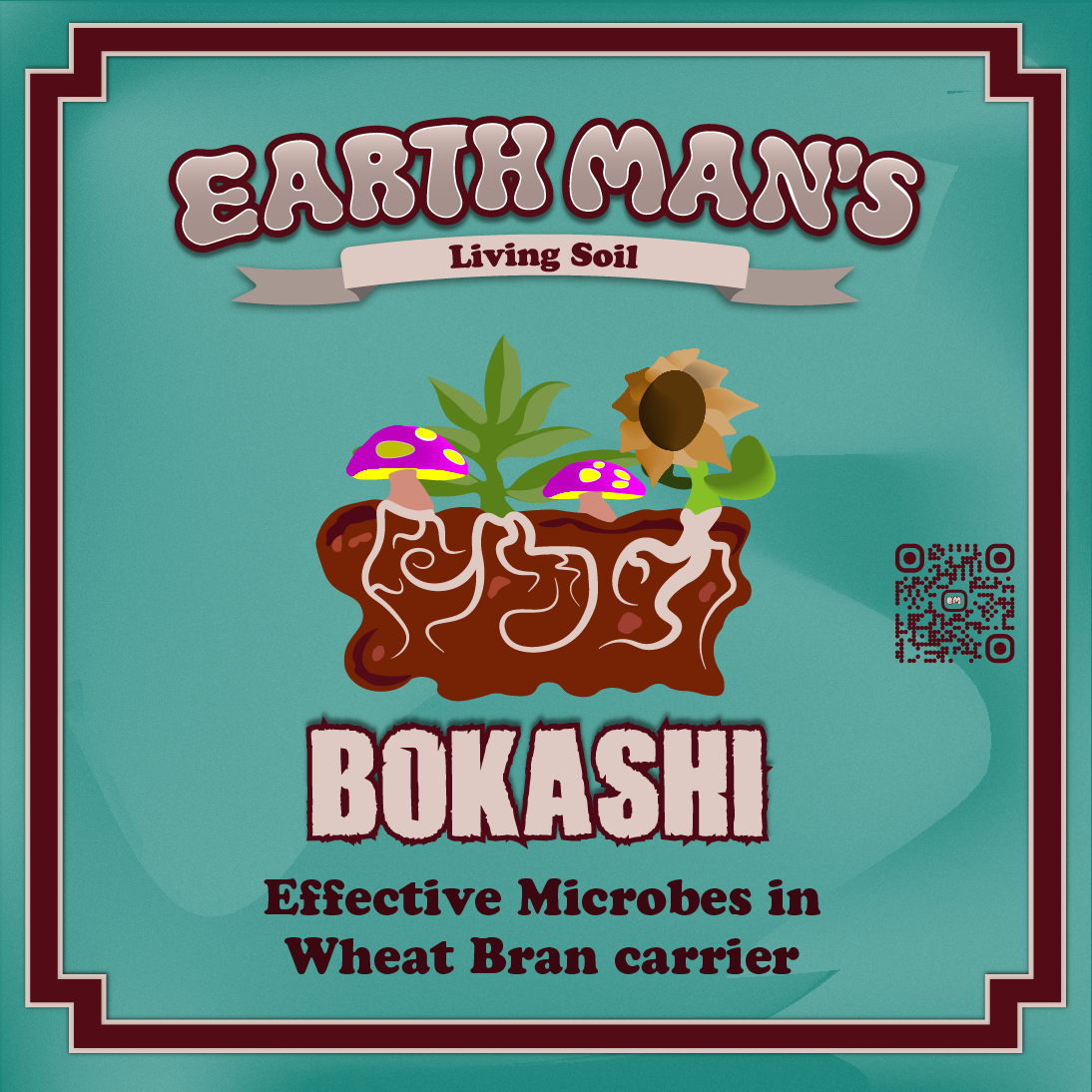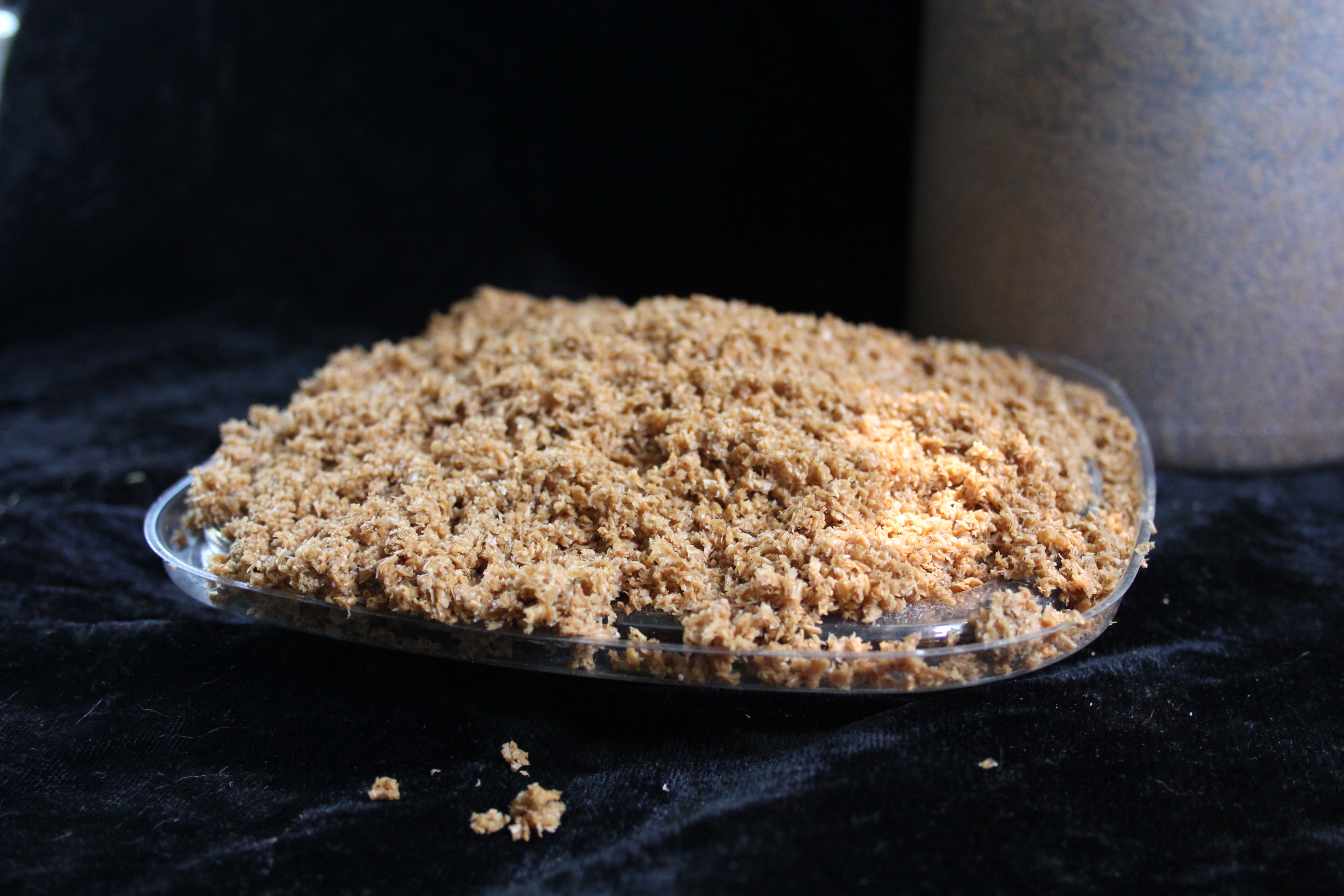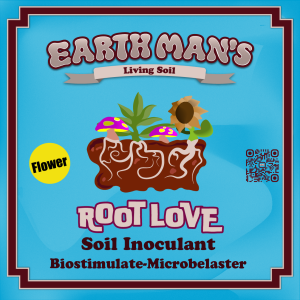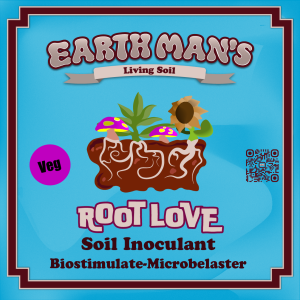Description
Origamis – Bokashi is all hand made with our fresh made Effective Microbes from organic unpasteurized and Quantum Growth light soil probiotic
ALL made by Soil Master Earthman
What Is Bokashi?
Bokashi is a Japanese term meaning ‘fermented organic matter’. It is often referred to as a type of ‘composting’ but it is actually a anaerobic fermentation process, resulting in a much different end product than that produced via composting. Many people like bokashi because it is very easy, and generally (bad) odour-free. All that is needed is a bucket (with lid), some special bokashi mix, and of course some organic waste.
KEEP COOL DRY PLACE, BAG ,ALWAYS KEEP SEALED ,USE, FOR COMPOST ACCELERATOR OR SOIL CONDITIONER , USE MIX RATE OF 1 TO 50 , MIX IN OR TOP DRESS , ALWAYS MULCH AND NO Chlorine
Advantages
It is really easy
It can be done on a small or large scale (so a good option for home owners)
It doesn’t produce bad odours (unlike a lot of anaerobic processes)
Produces a material that can be used as a ’slow-release’ fertilizer in your garden
Works great as a partner strategy to composting and vermicomposting
It can be used to deal with ALL kitchen wastes (even meat, dairy etc)
Admit it – just saying the word “Bokashi” is fun!!
CAN BE USED FOR THE BOKASHI SYSTEM OR USE FOR AN COMPOST ACCERATOR , OR A SOIL CONDITIONER FOR HEALTHY SOIL ————-
MADE UP OF A MIX OF THE LIQUID CARRIER THAT HAS MOLASSES AND THE FOLLOWING EFFECTIVE MICROBES–
Origami’s living soil products
BOKASHI BRAN LIVING EFFECTIVE MICROBES COMPOST ACCELERATOR , SOIL CONDITIONER……….. What Is Bokashi?
Bokashi is a Japanese term meaning ‘fermented organic matter’. It is often referred to as a type of ‘composting’ but it is actually a anaerobic fermentation process, resulting in a much different end product than that produced via composting. Many people like bokashi because it is very easy, and generally (bad) odour-free. All that is needed is a bucket (with lid), some special bokashi mix, and of course some organic waste.
KEEP COOL DRY PLACE, BAG ,ALWAYS KEEP SEALED ,USE, FOR COMPOST ACCELERATOR OR SOIL CONDITIONER , USE MIX RATE OF 1 TO 50 , MIX IN OR TOP DRESS , ALWAYS MULCH AND NO Chlorine
Advantages
It is really easy
It can be done on a small or large scale (so a good option for home owners)
It doesn’t produce bad odours (unlike a lot of anaerobic processes)
Produces a material that can be used as a ’slow-release’ fertilizer in your garden
Works great as a partner strategy to composting and vermicomposting
It can be used to deal with ALL kitchen wastes (even meat, dairy etc)
Admit it – just saying the word “Bokashi” is fun!!
CAN BE USED FOR THE BOKASHI SYSTEM OR USE FOR AN COMPOST ACCELERATOR , OR A SOIL CONDITIONER FOR HEALTHY SOIL ————-
MADE UP OF A MIX OF THE LIQUID CARRIER MIXED WITH WHEAT BRAN THAT HAS MOLASSES AND THE FOLLOWING EFFECTIVE MICROBES–
Lactobacillus plantarum 1 million colony forming units/cc (units/ml),
Lactobacillus casei, 1 million colony forming units/cc (units/ml),
Lactobacillus fermentum , 1 million colony forming units/cc (units/ml),
Lactobacillus delbrueckii, 1 million colony forming units/cc (units/ml),
Rhodopsuedomonas palustris………. 5.0 E+6 cells/ml
ORIGAMIS LIVING SOIL EDWARD PHELAN 109 CONAN ST SYRACUSE NY 13205 Email origamislivingsoil@gmail.com
Microbial inoculant , Soil Conditioner
ALL NATURE , ALL SCIENCE , ALL ONE
BOKASHI fermentation
1. Sprinkle a layer of bokashi bran in the bottom of the bucket.
Bokashi mix in hand Sprinkle a base layer of Bokashi mix on the bottom
2. Empty out your refrigerator. Add in up to 2” of food scraps.
Foods ok to use for bokashi Vegitables, fruits, grains, cooked or uncooked meat including bones, eggs and egg shells, cheese, coffee grounds, tea leaves and bags, last week’s spaghetti, etc…
Items NOT ok to use for bokashiDo not put aluminum foil, wax paper, plastic plates, plastic silverware, etc… Only food waste should go in the bucket.
ALL Foods are OK to use for bokashi If you can eat it, it can go in the bucket.
Tip: It works best to break the larger items into smaller pieces. Also, smaller whole items such as grapes or small tomatoes should at least be punctured to provide the microbes a way to get inside and get to work.
Place food scraps in the bucket Sprinkle layer of Bokashi mix on top
3. Cover with the bokashi bran. Please note that you cannot add too much bokashi bran, but you can add too little. Your nose will be your guide here; if it smells bad, add more bran. If it has no smell, or a slight sweet or vinegar smell, you are doing fine.
4. Use your plate or “mid lid” to press down and remove the air. Leave your mid lid on top until you are ready to add more, this helps keep a little bit of pressure on the food and the air in the bucket off of the top layer.
Keep air off the food by using a mid-lid You can attach a handle to an old plate
5. Close the bucket lid tightly.
Keep a tight lid on the bokashi bucket6. Repeat steps 2 – 5 until the bucket is full. It may take a few days to a few weeks to fill your bucket, depending on your family size and bucket size.
Depending on the type of food you put in the bucket and the amount of Bokashi mix you use, the reservoir at the bottom (the second bucket) will fill with liquid. This liquid or leachate is often referred to as “bokashi tea” or “bokashi juice.” If the reservoir gets full, you will need to empty it. You don’t want your food scraps sitting in the liquid, this will slow the process. You can pour the bokashi tea down your drain to prevent your drain from smelling or cloging. You can also dilute it and use it as an extremely potent fertilizer for your plants. 1 cup of Bokashi tea to 5-6 gallons of water. You must use it within 24 hours of removing it from your bucket.
7. Regardless of how long it takes you to fill your bucket, when it is full, seal the bucket tightly and wait at least 2 weeks for the fermentation process to complete. During this two weeks, do not open the bucket. If you can’t get to it after the two weeks, no worries, it can sit for another week or so. Two weeks is just the approximate time it takes to break down the food.
It is a good idea to have two or more bokashi buckets, this way you can fill one up while the other is in its two week fermentation period.
Decomposition Option 1
Once fermentation is complete, you will need to finish the process outdoors.
8. Drill large holes in the bottom of an outdoor bucket. The holes should be big enough for worms to pass through.
9. Dig the bucket part way into the ground.dig bucket part way into the ground
10. Place the contents of the Bokashi bucket with alternating layers of soil in the outdoor bucket. The top layer should be at least two inches of soil.
11. Place the lid on tightly so animals don’t get into it. Wait 3-6 weeks.
12. It is done when it looks like compost. Harvest the finished product for use in your garden, or plant your plants in that location. You will have the fastest growing, greenest garden or flowerbed in the neighborhood.
13. Rinse the Bokashi bucket and start the whole process over again.
Decomposition Option 2
Once fermentation is complete, you will need to finish the process outdoors.
8. Dig a hole about 12-18 inches deep in your garden or back yard away from any structures, and pour the contents of your Bokashi bucket into it.
9. Cover the hole with dirt. It typically takes about 8 inches of dirt on top to prevent animals from digging it up.
10. Wait 4 weeks
11. Harvest the finished product for use in your garden, or plant your plants in that location. You will have the fastest growing, greenest garden or flowerbed in the neighborhood.
12. Rinse the Bokashi bucket and start the whole process over again.
Note: The decomposition step may take longer the first time around, depending on the current quality of your soil. For example, the North Texas clay may take up to 8 weeks for the food to fully decompose. As your soil improves around the decomposition site, it will take less time as there are more beneficial microbes in the soil. Option two will always be faster, but more difficult to harvest.
compost in hands
Burying Bokashi Compost in the garden will supply the plants with a nourishing food source and condition your soil with enriching microbes. The Bokashi Bucket composting system significantly accelerates the composting process of organic waste. Bokashi Compost is acidic when first dug in, but neutralizes after 7-10 days. Be sure plant roots do not come directly into contact with the compost as it may burn the roots, particularly if the plants are very young. Fresh compost can be stressful to new plants so it is best to wait at least two weeks before planting your favorite veggies, flowers etc.
Troubleshooting / Helpful Tips!
• You can never add too much Bokashi Activator Mix; better too much than
too little to ensure complete fermentation and no nasty smells.
• Only add fresh waste to your Bokashi Bucket. Never add rotten or moldy
wastes.
• Remember: The less air that comes into contact with the compost, the
better. Compact waste by pressing it down to remove air. You may want
to use a barrier to separate the compost from the remaining air in bucket
(ie trash bag or paper plate)
• Always close the lid tightly and drain the liquid frequently.
• Do not add excessive amounts of liquid or grease/oil to the bucket.
• Keep the bucket out of the sun.
• Wash the bucket after each use
– also remember to keep bokashi as airtight as possible during storage
How long will the Bokashi Culture Mix last?
The shelf life is many years.
How do I know if the Bokashi Culture Mix is ok to use?
The color of the Bokashi culture mix should be light brown and it should have a slightly sweet aromatic odor. You may see a white patch or two in a packet and this is normal. If it is black or blue or smells rotten, it has spoiled and should be discarded by burying it in the soil.
What are the white patches?
These are colonies of yeast (microbes) that have started to grow. They help in the fermentation of organic waste material.
Uses for Bokashi:
· Bokashi Tea
Add 1 ounce bokashi to one gallon filtered water. Let stand (sealed airtight) for 12 hours. Then water
plants, flowers, vegetables etc.
· Gardening:
1. Mix dry bokashi with potting soil for potted plants at a rate of about 1-3% bokashi to soil.
2. Use bokashi-fermented/pickled food waste trenched & buried between rows of your garden.
3. Mix dry bokashi in the soil as you are planting your vegetables, fruits, or flowers.
4. Use bokashi tea as a spray or in a watering can for your garden plants.
Septic Sanitizing
Add 1/8 cup bokashi to one gallon filtered water. Let stand for 12 hours (sealed airtight). Then
pour/flush activated bokashi water down the sink or toilet drain. Replaces the need for chemicals such as RID-X.
· Reduce odors
Sprinkle on pet bedding or smelly yards.
Add 1/2 cup per 2# kitty litter per litter change
Effective Microorganisms what are they-
(1) Photosynthetic bacteria (Phototrophic bacteria)
Photosynthetic bacteria are independent self supporting microorganisms. These bacteria synthesize useful substances from secretions of roots, organic matter and/or harmful gases (e.g. hydrogen sulfide) by using sunlight and the heat of soil as sources of energy. The useful substances comprise of amino acids, nucleic acids, bioactive substances and sugars, all of which promote plant growth and development.
These metabolites are absorbed into plants directly and also act as substrates for increasing bacteria. Thus increasing Photosynthetic bacteria in the soil enhances other effective microorganisms. For example, VA (vesicular-arbuscular) mycorrhiza in the rhizosphere are increased due to the availability of nitrogenous compounds (amino acids) for use as substrates secreted by Photosynthetic bacteria. VA mycorrhiza increases the solubility of phosphates in soils thereby supplying unavailable phosphorus to plants. VA mycorrhiza can coexist with Azotobactor as nitrogenfixing bacteria and enhance nitrogen fixing ability of legumes.
(2) Lactic acid bacteria
Lactic acid bacteria produces lactic acid from sugars, and other carbohydrates produced by Photosynthetic bacteria and Yeast. Thus, food and drinks such as yogurt and pickles have been made by using Lactic acid bacteria for a long period of time. However, lactic acid is a strong sterilizer. It suppresses harmful microorganisms and increases rapid decomposition of organic matter. Moreover Lactic acid bacteria enhances the breakdown of organic matter such as lignin and cellulose, and ferments these materials without causing harmful influences caused by undecomposed organic matter.
Lactic acid bacteria has the ability to suppress Fusarium propagation which is a harmful microorganism causing disease problems in continuous cropping. Generally, increased Fusarium populations weakens plants. This condition promotes diseases and also results in the sudden increase of harmful nematodes. The occurrence of nematodes disappear gradually, as Lactic acid bacteria suppresses the propagation and function of Fusarium.
(2) Lactic acid bacteria
Lactic acid bacteria produces lactic acid from sugars, and other carbohydrates produced by Photosynthetic bacteria and Yeast. Thus, food and drinks such as yogurt and pickles have been made by using Lactic acid bacteria for a long period of time. However, lactic acid is a strong sterilizer. It suppresses harmful microorganisms and increases rapid decomposition of organic matter. Moreover Lactic acid bacteria enhances the breakdown of organic matter such as lignin and cellulose, and ferments these materials without causing harmful influences caused by undecomposed organic matter.
Lactic acid bacteria has the ability to suppress Fusarium propagation which is a harmful microorganism causing disease problems in continuous cropping. Generally, increased Fusarium populations weakens plants. This condition promotes diseases and also results in the sudden increase of harmful nematodes. The occurrence of nematodes disappear gradually, as Lactic acid bacteria suppresses the propagation and function of Fusarium.
(3) Yeasts
Yeasts synthesize antimicrobial and useful substances for plant growth from amino acids and sugars secreted by Photosynthetic bacteria, organic matter and plant roots.
Bioactive substances such as hormones and enzymes produced by yeasts promote active cell and root division. Their secretions are useful substrates for effective microorganisms such as Lactic acid bacteria and Actinomycetes.
Each species of Effective Microorganisms (photosynthetic bacteria, lactic acid bacteria, yeasts, ) has its own important function. However, photosynthetic bacteria is the pivot of EM activity.
Photosynthetic bacteria support the activities of other microorganisms. On the other hand, photosynthetic bacteria also utilizes substances produced by other microorganisms. This phenomenon is termed “coexistence and co-prosperity”.
When Effective Microorganisms increase as a community in soils, populations of native effective microorganisms are also enhanced. Thus, the micro flora becomes rich and microbial ecosystems in the soil become well-balanced, where specific microorganisms (especially harmful microorganisms) do not increase. Thus, soil borne diseases are suppressed.
Plant roots secrete substances such as carbohydrates, amino and organic acids and active enzymes. Effective microorganisms use these secretions for growth. During this process, they also secrete and provide amino and nucleic acids, a variety of vitamins and hormones to plants. Furthermore, in such soils, effective microorganisms in the rooting zone(rhizosphere) co-exist (symbiosis) with plants. Hence, plants grow exceptionally well in such soils which are dominated by effective microorganisms.
n the presence of organic matter, photosynthetic bacteria and algae can utilize wavelengths ranging from 700 to 1200 nm. Green plants do not use these wavelengths. Fermenting microorganisms can also breakdown organic matter, thereby releasing complex compounds such as amino acids for plant use. This increases the efficiency of organic matter for crop production Thus a key factor for increasing crop production is the availability of organic matter, which has been developed by utilizing solar energy and the presence of efficient microbes to decompose these materials. This increases the utilization efficiency of solar energy.




Reviews
There are no reviews yet.